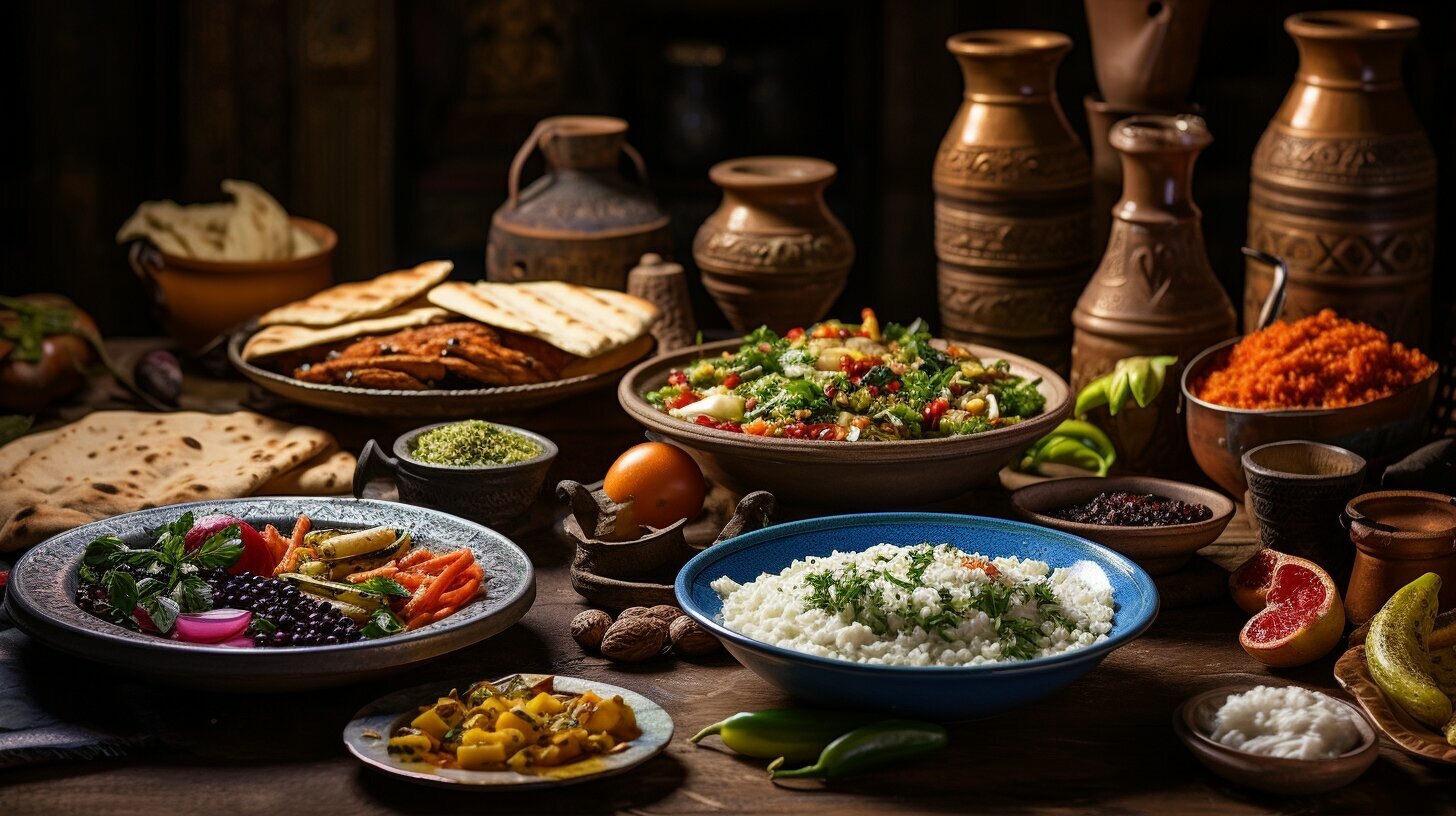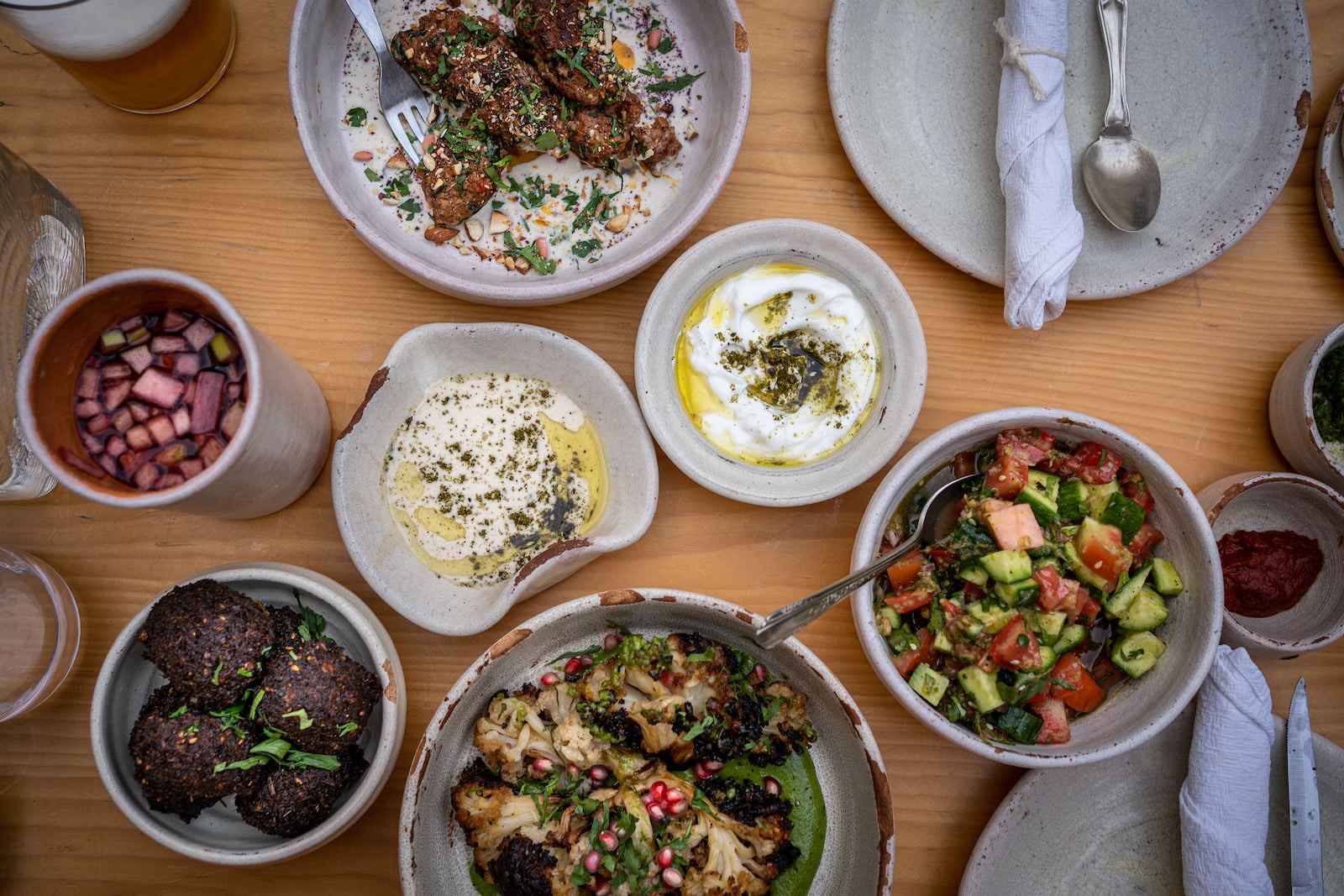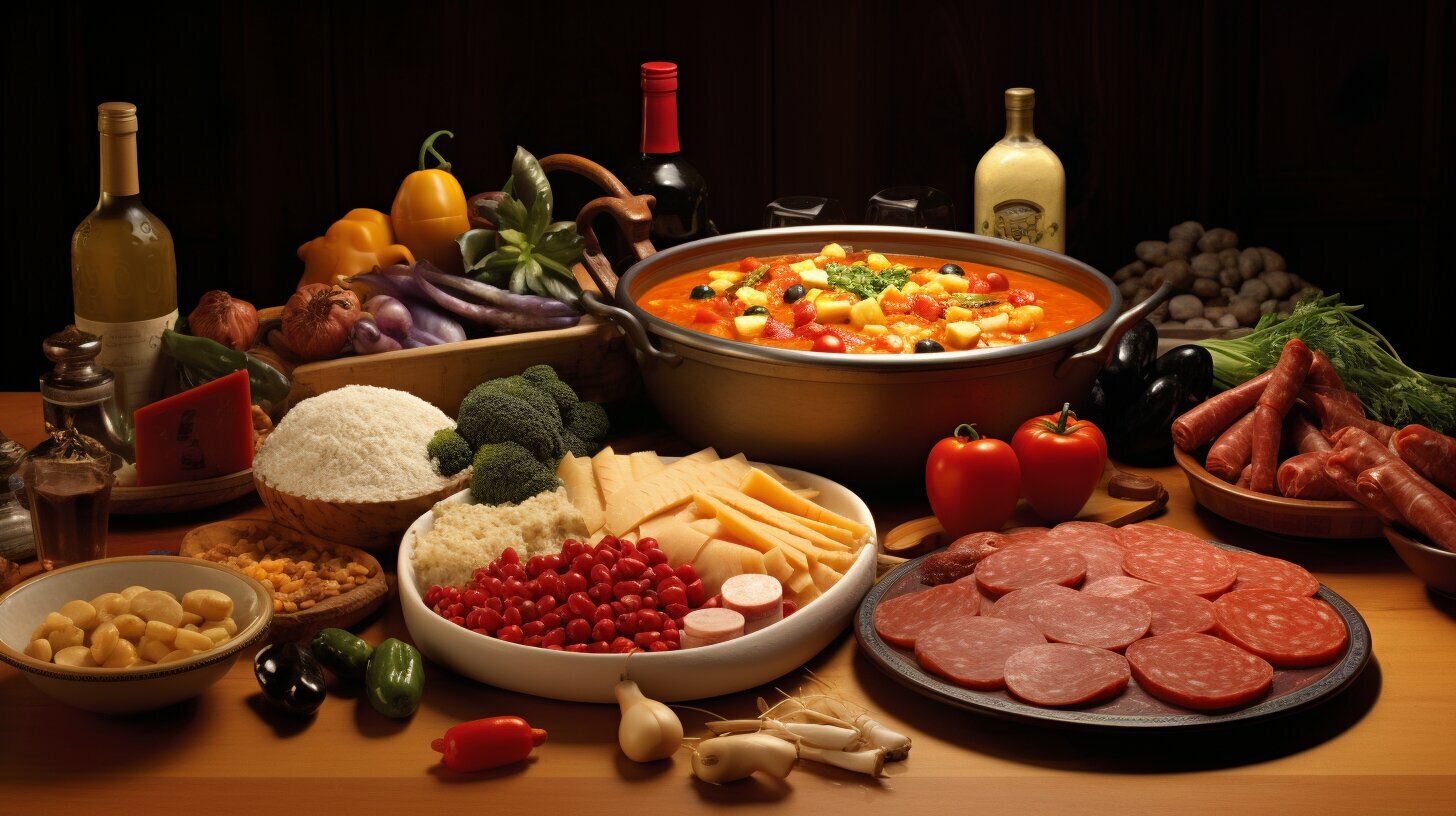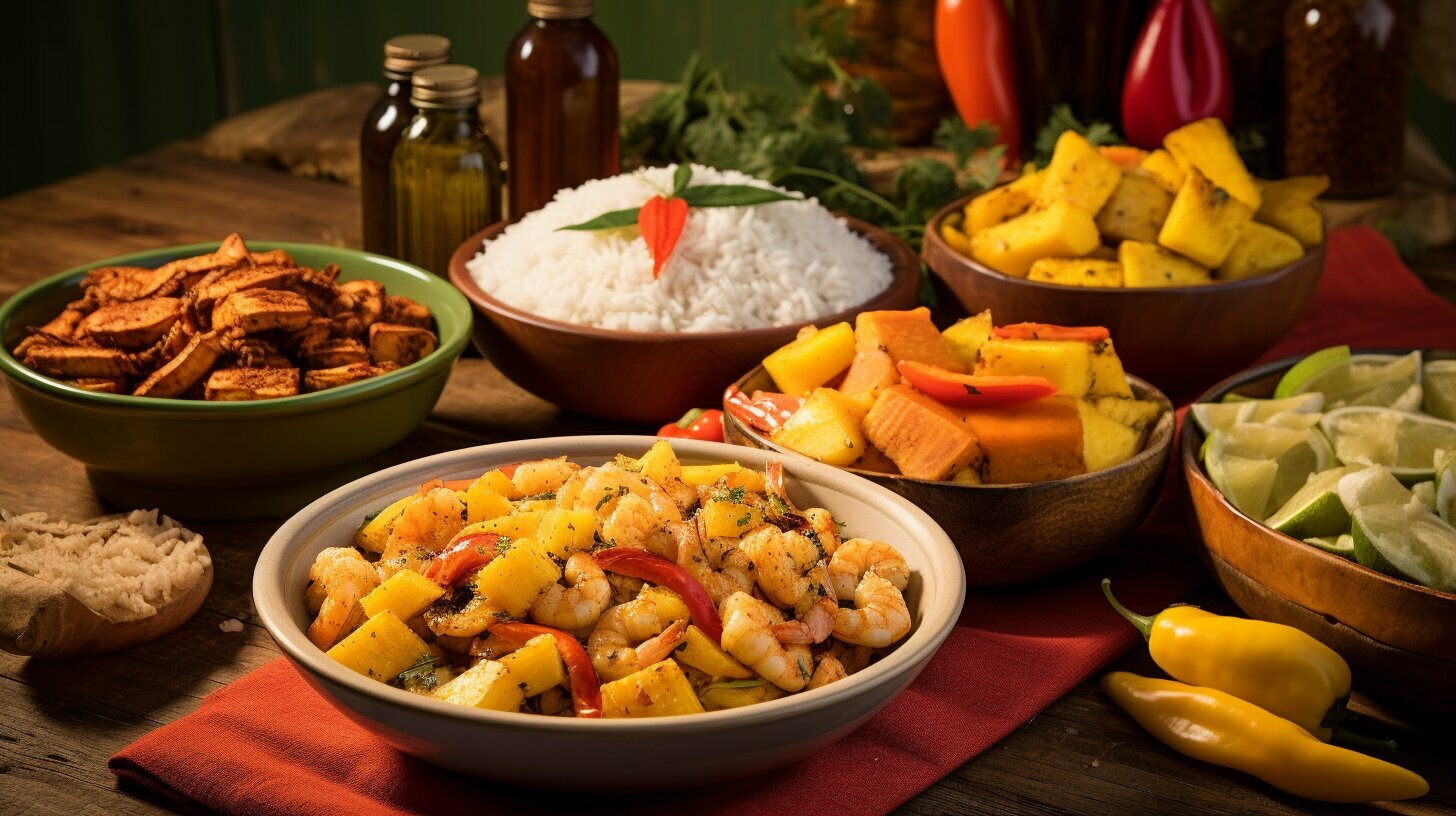When it comes to food, two of the most popular and beloved cuisines are Middle Eastern and Mediterranean. While these two regions share a lot in common in terms of geography and history, their food is vastly different. From distinct spices and cooking techniques to unique ingredients and cultural influences, Middle Eastern and Mediterranean cuisine have their own unique flavors and styles.
In this article, we will explore what makes Middle Eastern food different from Mediterranean food and highlight the defining factors of each cuisine.
Key Takeaways
- Middle Eastern cuisine and Mediterranean cuisine are two of the most popular and beloved cuisines globally.
- Despite sharing many similarities, these two cuisines have distinct spices, ingredients, and cooking techniques that set them apart.
- The influences and cultural backgrounds that have shaped Middle Eastern and Mediterranean cuisine contribute to their unique flavors and styles.
- Fusion cuisine and cross-cultural influences have led to dishes that blend elements from both these cuisines.
- By understanding the differences and similarities between Middle Eastern and Mediterranean food, we can appreciate both cuisines and the rich cultures behind them.
Flavors in Middle Eastern and Mediterranean Cuisine
One of the most notable differences between Middle Eastern and Mediterranean cuisine is the unique flavors that each offers. Both cuisines make use of a wide range of herbs and spices, but the combinations and methods of preparation set them apart.
Middle Eastern flavors are known for their complexity and depth, often combining sweet, savory, and sour tastes in a single dish. Common spices used in Middle Eastern cuisine include cumin, cinnamon, cardamom, and sumac. Herbs like parsley, mint, and cilantro are also used generously to add fresh, bright flavors. Dishes like shawarma and kebab are popular examples of Middle Eastern cuisine.
Mediterranean flavors, on the other hand, are characterized by their simplicity and lightness. The use of olive oil, garlic, and lemon is common, and fresh herbs like oregano and thyme add subtle layers of flavor. Grilled fish and roasted vegetables are staples of Mediterranean cuisine, and dishes like Greek salad and moussaka showcase the unique combination of ingredients that define the region.
Despite their differences, Middle Eastern and Mediterranean flavors can often complement each other. For example, the tangy flavor of yogurt is a common ingredient in both cuisines, as is the use of za’atar, a spice blend that combines thyme, sumac, and sesame seeds. These overlapping flavors are a testament to the rich culinary traditions that have evolved over centuries in this part of the world.
Ingredients in Middle Eastern and Mediterranean Cuisine
Middle Eastern and Mediterranean cuisines are both known for their bold and distinctive flavors, but their differences lie in the ingredients used. Middle Eastern cuisine typically features a wide array of spices, nuts, and dried fruits, while Mediterranean cuisine leans towards fresh herbs, seafood, and vegetables.
One of the key ingredients that differentiates the two cuisines is grains. Middle Eastern cuisine often employs rice and bulgur wheat, while Mediterranean cuisine favors pasta and couscous. Both cuisines, however, make use of legumes like chickpeas, fava beans, and lentils. These versatile ingredients are used in soups, stews, and dips like hummus and baba ganoush.
Another important ingredient in Middle Eastern cuisine is lamb, which is widely consumed in the region. Mediterranean cuisine tends to favor poultry and seafood, with dishes like grilled octopus, shrimp scampi, and Mediterranean-style stuffed squid.
Dairy products are also used differently in Middle Eastern and Mediterranean cuisine. While Middle Eastern cuisine features a lot of yogurts and cheeses, Mediterranean cuisine often relies on feta cheese and tangy goat cheese.
Finally, when it comes to vegetables, Middle Eastern cuisine tends to use root vegetables like carrots, beets, and turnips, while Mediterranean cuisine emphasizes fresh, leafy greens like spinach, basil, and parsley.
Overall, the ingredients used in Middle Eastern and Mediterranean cuisine reflect the regions’ diverse cultures, climates, and agricultural practices. Both cuisines offer a rich and flavorful culinary experience that highlights the unique and delicious ingredients of each region.
Cooking Styles in Middle Eastern and Mediterranean Cuisine
Middle Eastern and Mediterranean cuisine are known for their unique cooking styles that have been perfected over centuries. While there are similarities in the preparation of dishes, each cuisine has its own distinct methods of cooking that set it apart.
One of the most iconic cooking styles in Middle Eastern cuisine is grilling. It is common to find meat and vegetables grilled on skewers, or kebabs, in Middle Eastern dishes. Grilled meats, such as lamb, beef, and chicken, are often marinated in herbs and spices before cooking, adding a depth of flavor to the dish. Another popular cooking technique is stewing, which is used to make hearty and comforting dishes like tagines and stews. These dishes are typically cooked over low heat for several hours, allowing the flavors to meld together and create a rich, complex taste.
In contrast, Mediterranean cuisine often utilizes frying as a cooking method. This can be seen in dishes like falafel, which are deep-fried balls made from ground chickpeas, herbs, and spices. Frying is also used for seafood dishes like calamari and sardines, which are commonly found along the Mediterranean coast. Another popular cooking technique is roasting, which is used to prepare dishes like roasted lamb and fish. In Mediterranean cuisine, roasting is often done over an open flame or in a wood-fired oven, imparting a smoky flavor to the dish.
Signature Dishes
One of the most famous Middle Eastern dishes that utilizes grilling is shish taouk, which is marinated chicken skewers. Another popular dish is kofta, which are spiced meatballs typically made with lamb, beef, or a combination of both. In contrast, Mediterranean cuisine is known for dishes like moussaka, which is a hearty casserole made with eggplant, ground meat, and a creamy béchamel sauce. Another iconic dish is paella, a rice-based dish that originated in Spain and is often prepared with seafood and spices.
Overall, the cooking styles used in Middle Eastern and Mediterranean cuisine play a significant role in shaping the unique tastes and textures of these dishes. Whether it’s grilling, stewing, frying, or roasting, each method of cooking brings its own distinct flavors and techniques to the table.
Influences and Cultural Background
Both Middle Eastern and Mediterranean cuisines have been shaped by a rich history of trade and cultural exchange. The Mediterranean region has been a hub of trade for centuries, with its cuisine influenced by Greeks, Romans, and Arabs, among others. Similarly, Middle Eastern cuisine has been shaped by a range of cultural influences, including Persian, Ottoman, and Arab.
One of the primary factors that have influenced both cuisines is the historical trade routes that crisscrossed the region. Spices and ingredients from Asia and Africa were traded in markets throughout the Mediterranean, giving rise to a diverse culinary landscape that incorporated a wide range of ingredients and flavors.
Another significant influence on both Middle Eastern and Mediterranean cuisine has been colonization. Many regions were colonized by European powers, such as France and Italy, resulting in the introduction of new ingredients and cooking techniques. The influence of colonialism is particularly evident in the fusion cuisine that emerged in places like Lebanon and Tunisia, where local dishes were combined with French and Italian elements.
Cultural exchange has also played a significant role in shaping both Middle Eastern and Mediterranean cuisine. The Arab world has a long history of cultural exchange with Europe, with many Arabic scholars studying in European universities during the Renaissance. The exchange of ideas extended to the culinary realm, with Middle Eastern techniques like stuffing and grilling finding their way into European cuisine.
The Influence of Religion
Religion has also had a significant influence on both Middle Eastern and Mediterranean cuisine. Both Judaism and Islam prohibit the consumption of pork, resulting in an emphasis on lamb and other meats in the cuisine of these regions. Similarly, the dietary restrictions of Lent in Christianity have influenced the use of seafood in Mediterranean cuisine.
The use of alcohol is also restricted in Islam, resulting in a range of non-alcoholic beverages like mint tea and lemonade that are popular in Middle Eastern cuisine.
Similarities between Middle Eastern and Mediterranean Food
Despite the unique differences in Middle Eastern and Mediterranean cuisine, there are also many similarities that bridge the two. These shared elements speak to the long history of cultural exchange and trade between the regions.
- Ingredients: Both Middle Eastern and Mediterranean cuisine rely heavily on fresh, seasonal produce like olives, grapes, and eggplant. Both cuisines also use grains extensively, such as couscous and bulgur in Middle Eastern cuisine and pasta and risotto in Mediterranean cuisine.
- Flavors: Middle Eastern and Mediterranean cuisine share many of the same spices and herbs, including cumin, coriander, and mint. Both cuisines also feature a balance of sweet and sour flavors in their dishes.
- Cooking techniques: Many of the same cooking techniques are used in both Middle Eastern and Mediterranean cuisine, such as grilling, roasting, and stewing. Both cuisines also feature an emphasis on slow-cooked dishes that allow flavors to meld together over time.
These shared elements make it clear that Middle Eastern and Mediterranean cuisine share a common culinary heritage. Exploring the similarities and differences between these two rich and diverse cuisines can lead to a greater appreciation for the complexities and nuances of both.
Fusion Cuisine and Cross-Cultural Influences
Middle Eastern and Mediterranean cuisine have a rich history of cross-cultural influences and culinary fusion. With their unique set of ingredients and techniques, these cuisines have influenced other culinary traditions around the world.
One example of fusion cuisine is the popular dish, shakshuka, which originated in North Africa but is now commonly consumed throughout the Middle East and the Mediterranean. This dish is made by poaching eggs in a tomato-based sauce that includes peppers, onions, and spices like cumin and paprika. Shakshuka has become a staple dish in Israeli cuisine, where it is often served for breakfast or brunch.
Another popular dish that has crossed cultural borders is hummus, a chickpea dip that is ubiquitous throughout the Middle East and Mediterranean. Hummus has become a popular snack food around the world, and can be found in many grocery stores and restaurants outside of the Middle East and Mediterranean.
These examples show how Middle Eastern and Mediterranean cuisine have influenced and been influenced by other culinary traditions. In the globalized world, fusion cuisine has become more common, and chefs are often inspired by the techniques and ingredients from different parts of the world.
Conclusion
In conclusion, Middle Eastern and Mediterranean cuisine share many similarities, including the use of olive oil, herbs, and spices, as well as similar cooking techniques like grilling and stewing. However, there are also significant differences in the ingredients, flavors, and cultural influences that make each cuisine unique.
Middle Eastern cuisine often features bold and complex flavors, with a heavy emphasis on spices like cumin, coriander, and cardamom. It also makes use of ingredients like bulgur, chickpeas, and lamb, which are less common in Mediterranean cooking. In contrast, Mediterranean cuisine tends to focus on fresh, simple ingredients like tomatoes, feta cheese, and seafood, with a lighter use of herbs and spices.
Despite these differences, Middle Eastern and Mediterranean food have both influenced and been influenced by other culinary traditions, resulting in the emergence of fusion dishes that blend elements from both cuisines. These dishes demonstrate the versatility and adaptability of these two rich culinary traditions.
Overall, understanding the differences between Middle Eastern and Mediterranean cuisine can help food lovers appreciate the nuances and depth of each cuisine, and inspire them to explore the unique flavors and dishes of both regions.
What Makes Middle Eastern Food Different from Mediterranean Food
FAQ
Q: What is Middle Eastern cuisine?
A: Middle Eastern cuisine refers to the culinary traditions and dishes that originate from countries in the Middle East, such as Lebanon, Syria, Iran, and Egypt. It is known for its bold flavors, aromatic spices, and diverse range of ingredients.
Q: What is Mediterranean cuisine?
A: Mediterranean cuisine encompasses the culinary traditions of countries bordering the Mediterranean Sea, including Greece, Italy, Spain, and Morocco. It is characterized by fresh and healthy ingredients, such as olive oil, seafood, and an abundance of fruits and vegetables.
Q: What are the key differences between Middle Eastern and Mediterranean food?
A: While there are similarities between Middle Eastern and Mediterranean food, there are also notable differences. Middle Eastern cuisine often incorporates more spices and flavors, such as cumin and coriander, while Mediterranean cuisine focuses on simpler and fresher ingredients. Additionally, Middle Eastern dishes often feature rice and flatbreads, while Mediterranean dishes may include pasta and pizza.
Q: Are there any similarities between Middle Eastern and Mediterranean food?
A: Yes, despite their differences, Middle Eastern and Mediterranean food share some similarities. Both cuisines emphasize the use of fresh and seasonal ingredients, as well as healthy cooking methods like grilling and roasting. The Mediterranean diet, in particular, is known for its emphasis on whole grains, legumes, and olive oil, which are also prevalent in Middle Eastern cooking.
Q: Can you give examples of fusion cuisine that combine Middle Eastern and Mediterranean elements?
A: Certainly! One example is the popular dish known as falafel, which originated in the Middle East but has been adopted and adapted in Mediterranean countries like Greece and Cyprus. Another example is the use of za’atar, a Middle Eastern spice blend, in Mediterranean dishes like salads and roasted vegetables. These fusions create unique and delicious flavor combinations.
 Skip to main content
Skip to main content


